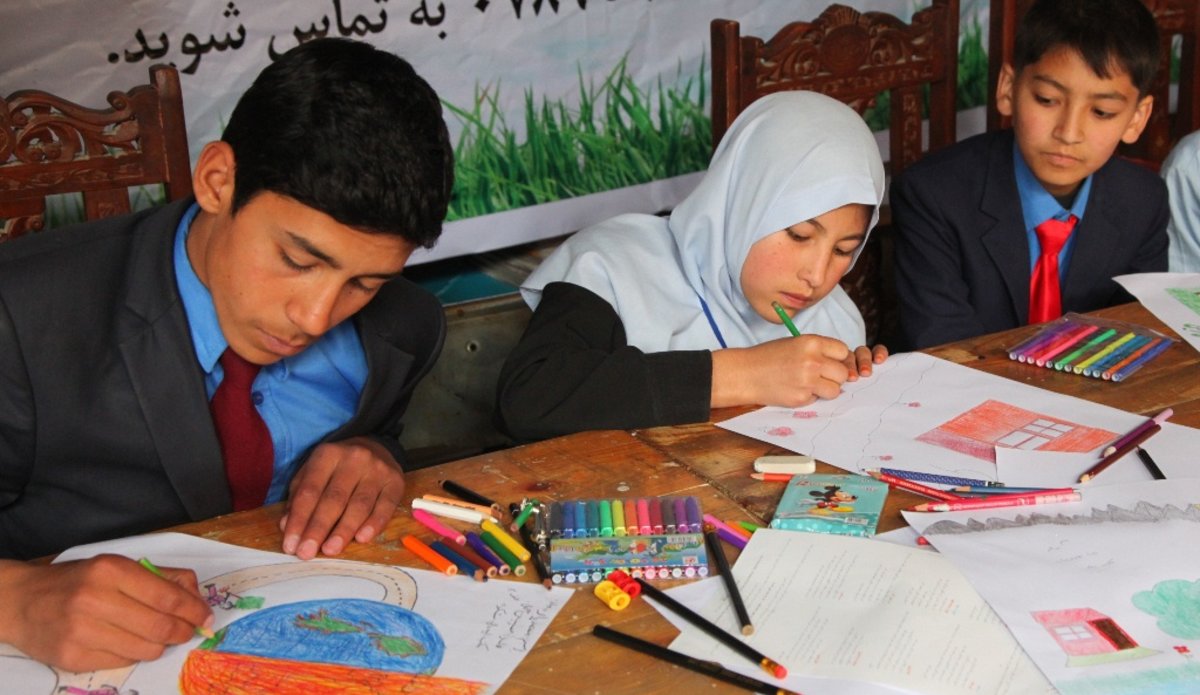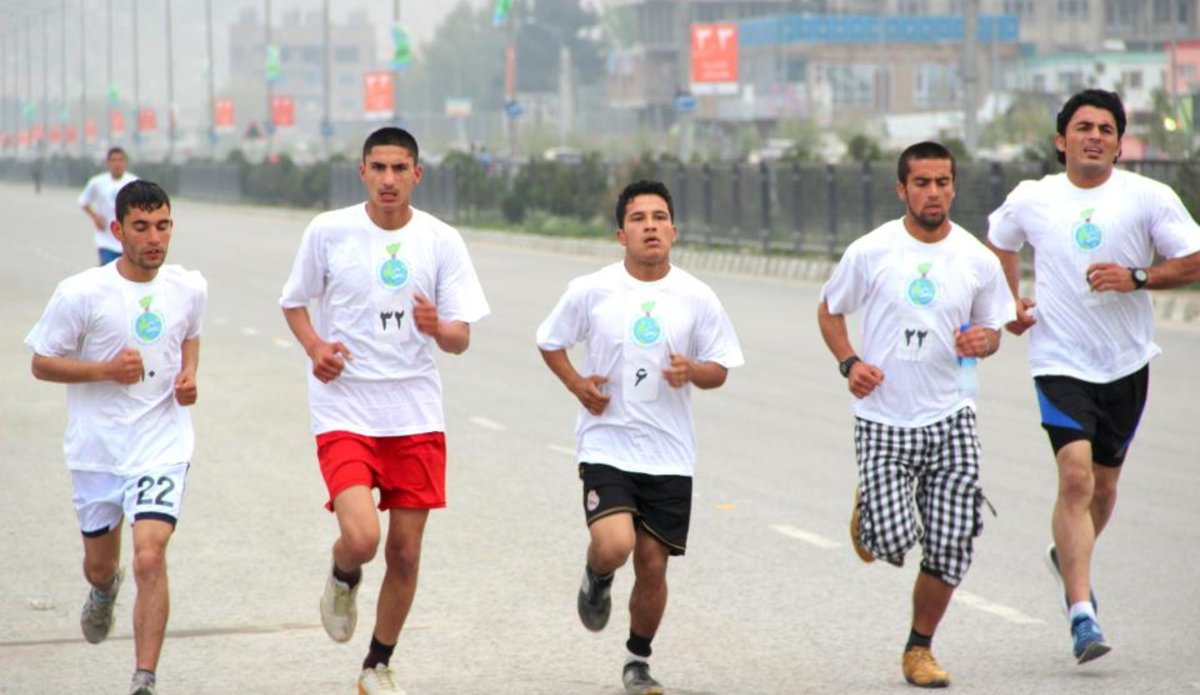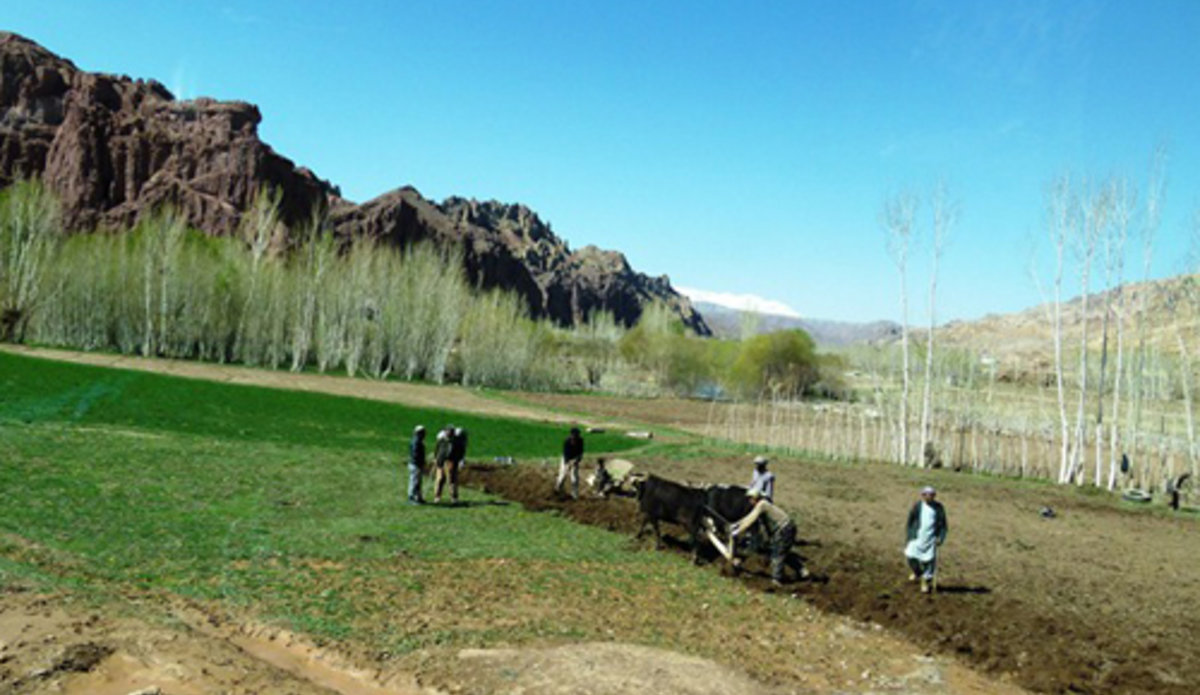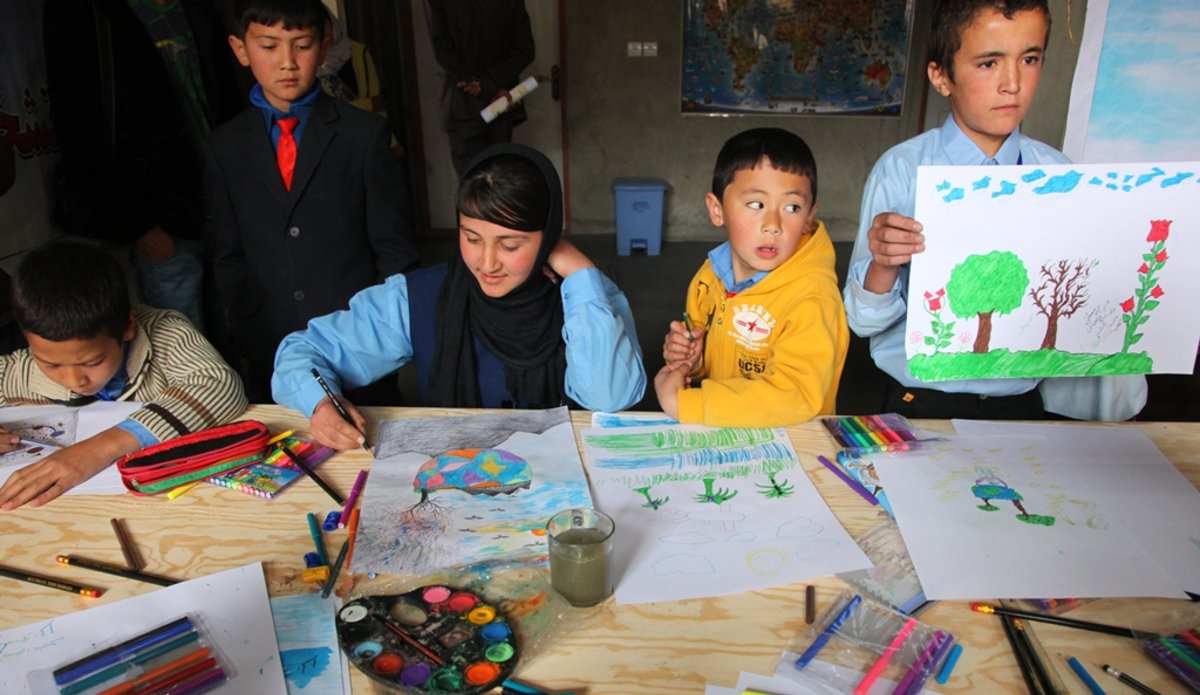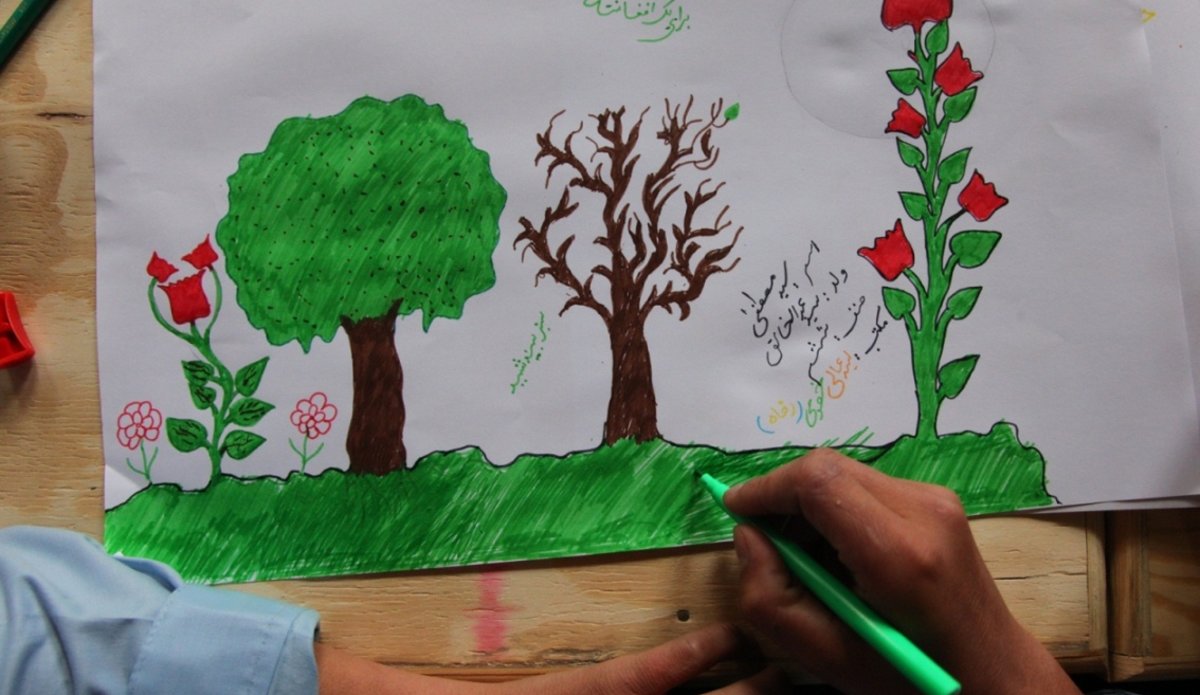On international day, Afghan children paint and athletes run with message to protect Earth
KABUL - As the world marked International Mother Earth Day today, the day started in the Afghan capital, Kabul, with the country’s national marathon players running a stretch of two kilometres and school-children expressing their imagination of the earth in the form of painting – all of them calling for a collective responsibility to promote harmony with nature and the planet. The day ended with a group of hikers from all walks of Afghan life climbing a hill in the Kabul suburb.
In his painting, Muhammad Yar, a sixth grader in a local Shikoh High School, portrayed a globe of two societies at odds with each other: one in red, burning in flames; and the second in blue with green patches, a prosperous society living in peace.
“If you plant trees and work for the welfare of the land, this land will be green and prosperous; however if you have gun in your hand and fight, this land will be on fire, that means bad luck and suffering,” said Mr. Yar, who was joined by about 40 other children. The theme of the painting event was: “What should be done for the future of earth?”
The United Nations General Assembly decided on 1 May 2009 to designate 22 April as International Mother Earth Day, by recognizing that Mother Earth reflects the interdependence that exists among human beings, other living species and the planet we all inhabit. In doing this, the Assembly also highlighted the need to help improve the lives of children and adults who suffer from the disorder so they can lead full and meaningful lives.
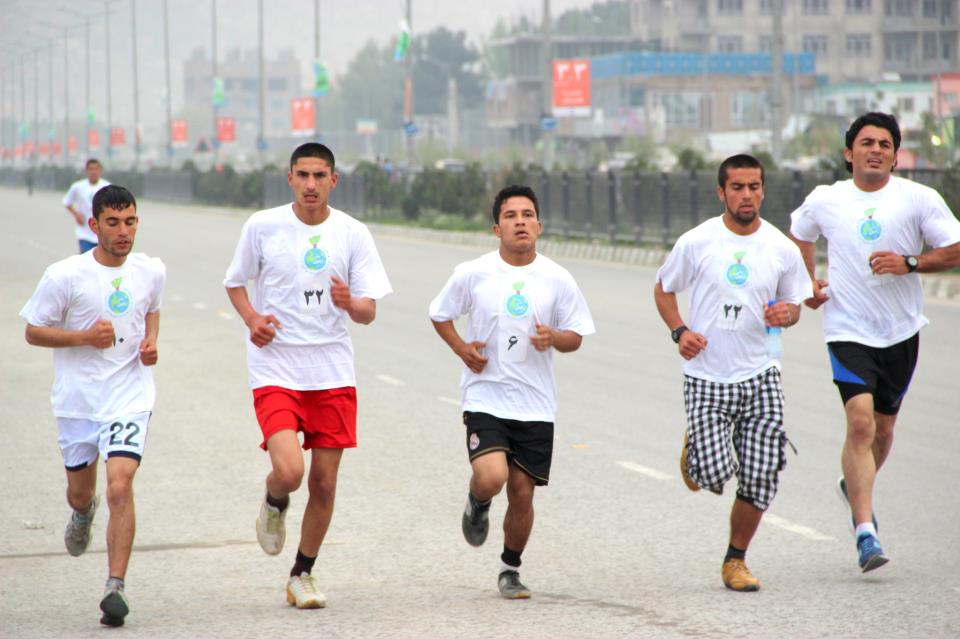
In his message on the international day, UN Secretary-General Ban Ki-moon said this is “a chance to reaffirm our collective responsibility to promote harmony with nature at a time when our planet is under threat from climate change, unsustainable exploitation of natural resources and other man-made problems.”
“When we threaten the planet, we undermine our only home – and our future survival. On this International Day, let us renew our pledges to honour and respect Mother Earth,” said Mr. Ban.
All three events in Kabul were organized by a voluntary community-based group called ‘Green Club – Afghanistan’, which notes in its Facebook page that it “initiates, supports and encourages greening and sustainable environmental well-being” and “engages active citizens to make the communities green.”
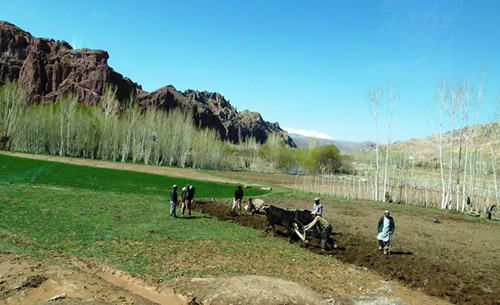
One of the members of the Club, Ahmed Samim Hoshmand, said celebrating the International Mother Earth Day in a country like Afghanistan, which is in active war for 34 years, offers an opportunity “to persuade people to take part voluntarily in promotion of productive social activities, changing and improving the quality of life in the country.”
A senior Afghan Government official looking after protection of environment, Ghulam Mohammad Malikyar, said the protracted war was behind environment degradation as the government lost control of a vast majority of the country and people turned to environment for their energy and other needs.
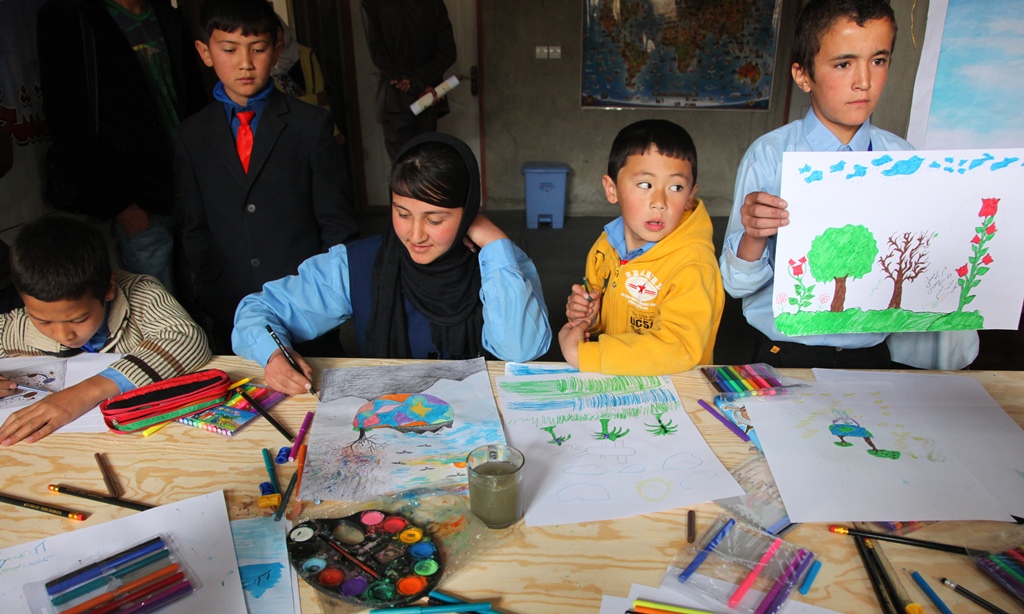
“We have lost our natural forests, which means, before the civil war, three per cent of the Afghan territory was covered with trees, unfortunately we lost almost half of them during the war,” said Mr. Malikyar. “Government has taken various steps for preservation of forests. However we need many years to restore Afghanistan’s resources in its pure natural shape.”
In October last year, the Government of Afghanistan, through its National Environmental Protection Agency, launched a US$6 million climate change initiative, the first of its kind in the country's history. This landmark scheme - to be implemented by the United Nations Environment Programme (UNEP) and funded mainly by the Global Environment Facility - aims to help communities that are vulnerable to the effects of climate change, such as drought, and to build the capacity of Afghan institutions to address climate change risk.
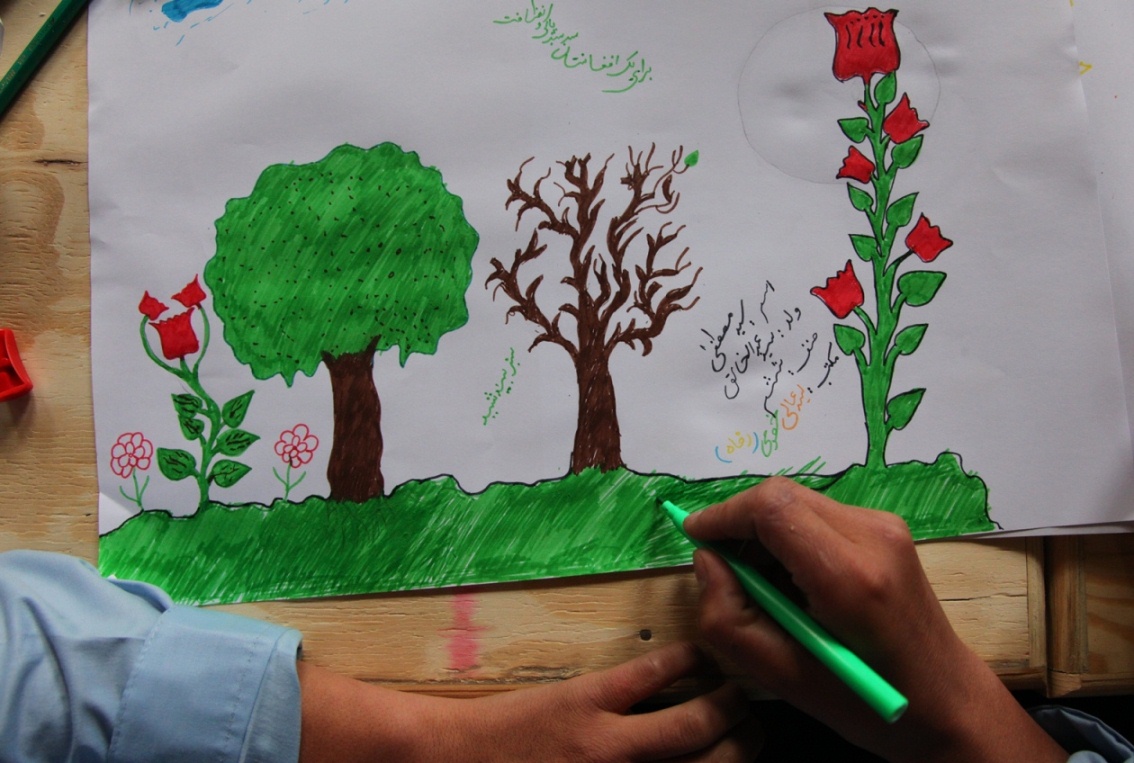
Mr. Hoshmand of the Green Club said that the painting event would encourage the Afghan children to think about their future and the earth. “The painting event aimed to understand what the children and youth think about the future of the country and a quality life in Afghanistan,” he said.
Another student who participated in the painting, Mariam Rizayee, an eighth grader, also divided in her painting the earth into two parts: the first engulfed in smoke and the second green and serene. “In the first part, the people do not have respect for the land and do nothing for its greenery; while the other is the territory of those people who value the earth.” she said while pointing to her artwork.
 UN
UN
